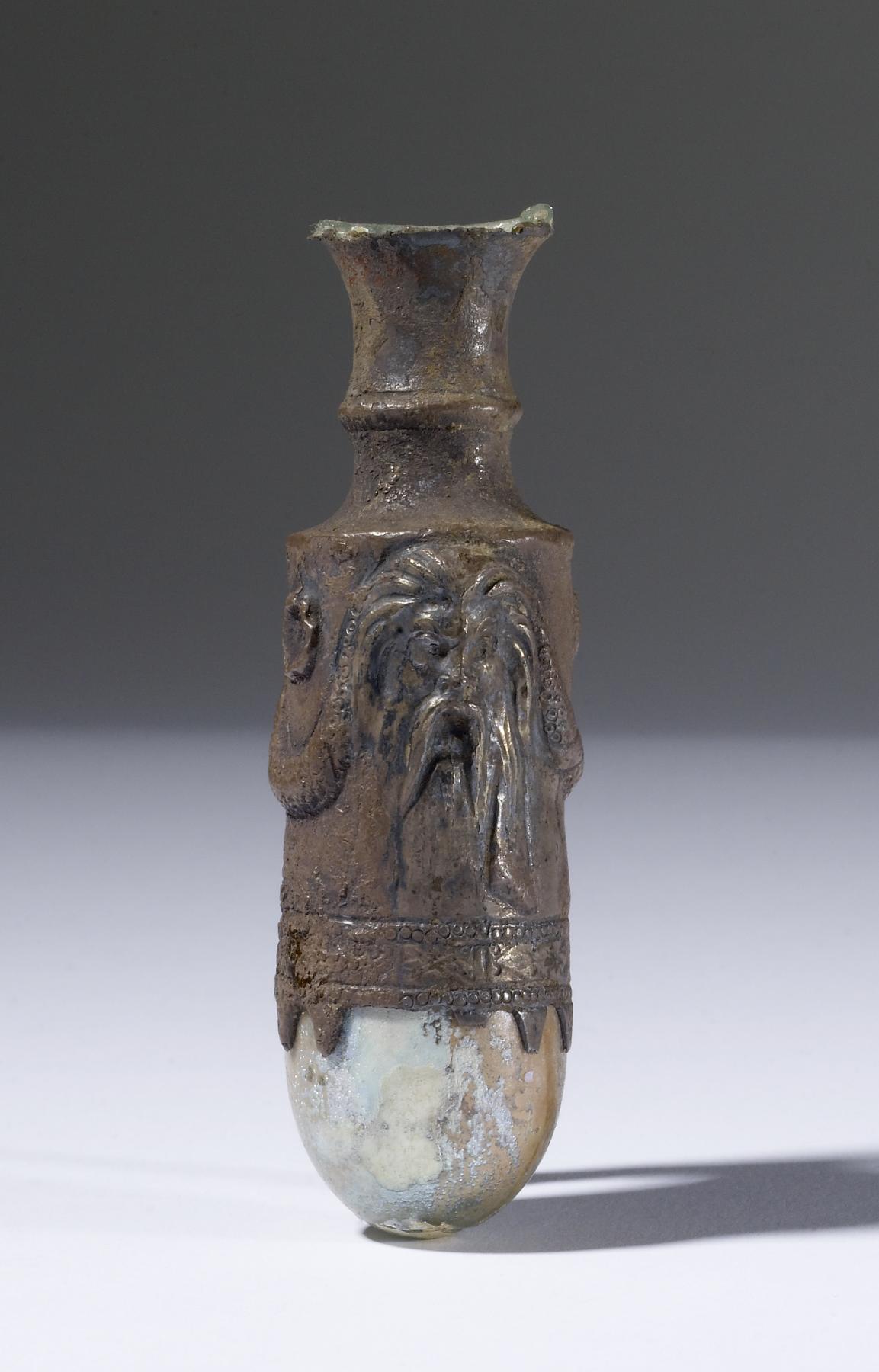"Alabastron" with Silver Case
(Roman Empire )
In the early Roman period, glass was a precious material ranked alongside gold, silver, and gems. It was often combined with precious metals for a luxurious effect. To create this "alabastron," a vessel for perfumed ointments, glass was blown into a silver case decorated with a head of Pan or a river god on either side.
Provenance
Provenance (from the French provenir, 'to come from/forth') is the chronology of the ownership, custody, or location of a historical object. Learn more about provenance at the Walters.
[Found in Macedonia]; Dikran Kelekian, New York and Paris [date and mode of acquisition unknown]; Henry Walters, Baltimore, 1912, by purchase; Walters Art Museum, 1931, by bequest.
Conservation
| Date | Description | Narrative |
|---|---|---|
| 2/15/2018 | Examination | Treated for exhibition |
| 2/15/2018 | Examination | Old repairs on the upper lip were redone, removing animal glue and replacing it with an acrylic adhesive. The upper lip of the glass is badly broken with missing fragments. |
| 12/4/2018 | Treatment | cleaned; repaired; stabilized; surface cleaned |
| 12/4/2018 | Treatment | This object was cleaned and stabilized after a damage incident. Several associated glass fragments were removed and kept separately, because they belonged to a different object. It is believed that these fragments were added at a later date to give this object a more complete appearance. |
Measurements
H: 3 5/8 × Diam: 1 1/4 in. (9.2 × 3.2 cm)
Credit Line
Acquired by Henry Walters, 1912
Location in Museum
Accession Number
In libraries, galleries, museums, and archives, an accession number is a unique identifier assigned to each object in the collection.
In libraries, galleries, museums, and archives, an accession number is a unique identifier assigned to each object in the collection.
57.932




